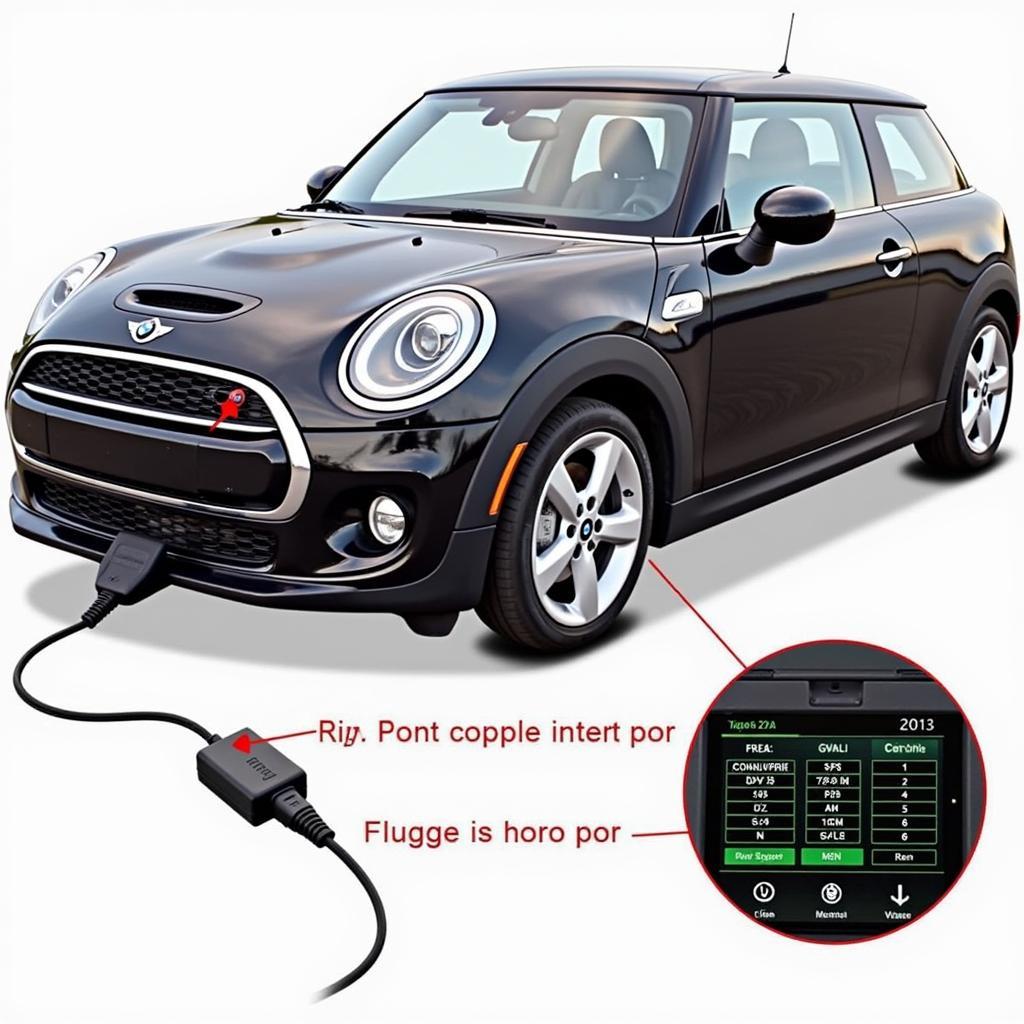The 2015 BMW Mini brake pad warning light is a crucial safety feature, alerting you when your brake pads are wearing thin and need replacing. However, even after replacing the brake pads, the warning light might stay on. This article guides you through the process of resetting the 2015 BMW Mini brake pad warning light, covering various methods from simple DIY techniques to more advanced diagnostic approaches.
Understanding the Brake Pad Warning Light
The brake pad warning light is triggered by sensors embedded within the brake pad assembly. These sensors detect when the brake pad material has worn down to a critical level. A lit warning light signifies it’s time for new brake pads. Ignoring this warning can lead to further damage to your braking system and potentially compromise your safety.
Simple Reset Procedures for 2015 BMW Mini Brake Pad Warning Light
Often, the warning light can be reset after replacing the brake pads with a few simple steps. Here’s a common method:
- Turn the ignition to position two: This powers up the vehicle’s electrical systems without starting the engine.
- Press and hold the brake pedal: Maintain firm pressure on the pedal.
- Turn the steering wheel fully to the left, then fully to the right: Repeat this process a few times.
- Release the brake pedal: The warning light should now be off.
If this doesn’t work, try the following alternative method:
- Turn the ignition to position two.
- Press and hold the trip reset button on the instrument cluster.
- While holding the trip reset button, turn the ignition off.
- Continue holding the trip reset button for about 10 seconds.
- Release the trip reset button. The warning light should be reset.
When Simple Resets Fail: Diagnostic Approaches
If the simple reset methods fail, it indicates a potential issue beyond just needing new brake pads. It could be a faulty sensor, wiring problem, or an issue with the vehicle’s control module. In such cases, a diagnostic scan is necessary.
Using a Diagnostic Scanner for 2015 BMW Mini
A diagnostic scanner allows you to read the error codes stored in your Mini’s computer. These codes pinpoint the specific problem area. You can purchase or borrow a compatible OBD-II scanner and follow these steps:
- Locate the OBD-II port: This port is usually located under the dashboard on the driver’s side.
- Connect the scanner: Plug the scanner into the OBD-II port.
- Turn the ignition to position two.
- Follow the scanner’s instructions: Each scanner has its own interface, but generally, you’ll select “Read Codes” or a similar option.
- Record the error codes: Write down any codes displayed. These codes will be crucial for further troubleshooting.
 OBD2 Scanner Connected to a BMW Mini
OBD2 Scanner Connected to a BMW Mini
“Using a diagnostic scanner is the most effective way to pinpoint the root cause of a persistent brake pad warning light,” says John Davies, Senior Automotive Diagnostics Technician at Bavarian Auto Solutions. “It allows you to move beyond guesswork and address the specific issue at hand.”
Resetting the Warning Light with a Scanner
Some diagnostic scanners also allow you to reset the brake pad warning light directly. After addressing the underlying issue, follow the scanner’s instructions to clear the error codes and reset the light. If the issue persists after the reset, further diagnosis might be required.
Remote Software Programming and Installation
In some cases, the issue might relate to the vehicle’s software. Remote software programming and installation can address software bugs or update the control module’s firmware. This requires specialized equipment and expertise, often offered by dealerships or specialized automotive software providers.
“Remote software solutions offer a convenient and efficient way to address software-related issues that may be triggering the brake pad warning light,” explains Sarah Miller, Lead Software Engineer at AutoTech Solutions Inc. “These updates can improve system performance and resolve compatibility issues.”
Conclusion
Resetting the 2015 BMW Mini brake pad warning light can be a straightforward process, often resolved by simple procedures. However, a persistent warning light requires a more in-depth approach using diagnostic tools and potentially remote software solutions. Addressing the underlying issue ensures your braking system functions optimally and maintains your safety on the road. Remember, neglecting a persistent warning light can lead to more significant problems down the line. So, take action promptly to ensure a safe and smooth driving experience.
FAQ
- Why is my brake pad warning light still on after replacing the pads? This could be due to a faulty sensor, wiring problem, or an issue with the control module.
- Can I drive with the brake pad warning light on? While you might be able to drive for a short period, it’s highly recommended to address the issue immediately.
- What does it mean if the warning light flashes? A flashing light usually indicates a more serious issue with the braking system, requiring immediate attention.
- How often should I check my brake pads? It’s a good practice to visually inspect your brake pads every few months or during regular maintenance checks.
- Where can I find a compatible OBD-II scanner for my Mini? Auto parts stores and online retailers offer a wide variety of OBD-II scanners compatible with BMW Minis.
- How much does it cost to replace brake pads on a 2015 BMW Mini? The cost varies depending on the type of brake pads and the labor charges.
- Can I reset the warning light myself without a scanner? Yes, several DIY methods can be attempted, as described in the article.

